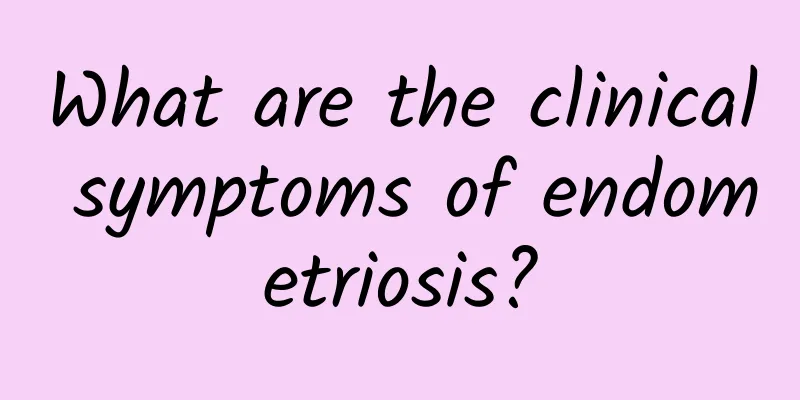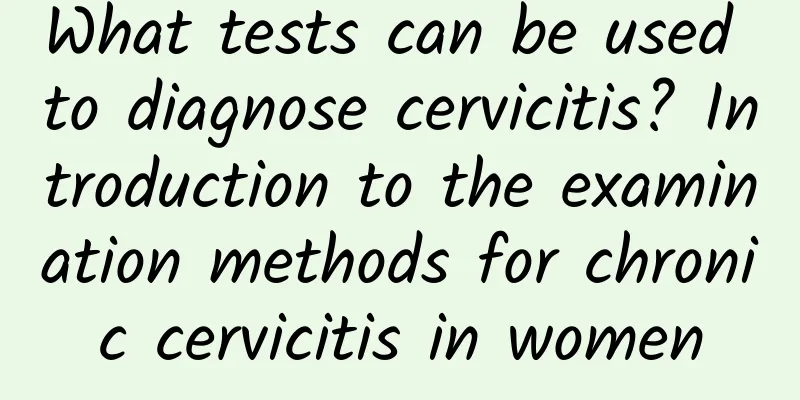What are the clinical symptoms of endometriosis?

|
Endometriosis has a serious impact on women's health, but endometriosis is similar to other gynecological diseases. So, what are the clinical symptoms of endometriosis? The clinical manifestations of endometriosis are: 1. Infertility: About 50% of endometriosis patients are accompanied by infertility. Among patients with unexplained infertility, about 30-40% suffer from endometriosis. Endometriosis causes infertility, which is often caused by pelvic masses, adhesions, fallopian tube blockage, poor follicle development or ovulation disorders caused by the disease; once pregnant, the ectopic endometrium is suppressed and atrophies, which plays a good role in the treatment of endometriosis. Some cases of habitual abortion are caused by endometriosis. 2. Dysmenorrhea: The clinical feature of endometriosis is progressive dysmenorrhea, which is a common and prominent feature. Most of them are secondary, that is, since the onset of endometriosis, patients complain that they did not have pain during menstruation in the past, but dysmenorrhea began to occur at a certain period, which can occur before, during and after menstruation. Some dysmenorrhea is severe and unbearable, requiring bed rest or medication for pain relief, and even causing pain to "roll on the bed" or hit the head. The pain often worsens with the menstrual cycle and disappears at the end of menstruation, but domestic reports show that about 21% of patients do not have dysmenorrhea. 3. Cyclic rectal irritation symptoms: The progressively aggravated cyclical rectal irritation symptoms are rarely seen in other gynecological diseases and are the most valuable symptoms for diagnosing this disease. The rectum, anus, and vulva are distended, painful, and feel tenesmus, and the frequency of bowel movements increases. As the lesion gradually worsens, the symptoms become more obvious, and disappear after menstruation. 4. Menstrual irregularity: Endometriosis patients often have shortened menstrual cycles, increased menstrual flow or prolonged menstrual periods, indicating that the patient has ovarian dysfunction. Menstrual irregularity can be used as a diagnostic reference, but it has no value in differential diagnosis. |
<<: When does adenomyosis require surgery?
>>: What are the symptoms and causes of having a large uterine fibroid during pregnancy?
Recommend
Patients must pay attention to the treatment precautions of cervicitis
Cervicitis is a disease that we often see in our ...
I’m afraid that obesity will come to settle the score after the Chinese New Year! Nutritionists teach you 5 smart rules for fat loss, so you can start working beautifully
In addition to family reunions, giving and receiv...
How to treat submucosal uterine fibroids? What is the treatment for submucosal uterine fibroids?
Everyone knows that the disease should be treated...
Ectopic pregnancy rupture and heavy bleeding can be life-threatening
Xiao Zheng, a 28-year-old girl from Shenyang, fai...
Will cervical erosion cause vaginal bleeding in women? How to prevent cervical erosion and bleeding in women?
Cervical erosion is a health killer for women amo...
There are 4 reasons for cervical erosion
Generally speaking, the causes of uterine erosion...
Burning 100 calories in 10 minutes is not a dream? Just do these 6 steps
The continuous parties have made you gain a lot o...
What should I do if my menstrual period suddenly stops after a few days?
What should I do if my menstrual period suddenly ...
What are the hazards of chronic cervicitis in women? Dietary considerations for chronic cervicitis in women
Cervicitis is a common gynecological disease in w...
How to take good care of irregular menstruation in life?
Irregular menstruation is one of the many gynecol...
Pregnant women's daily diet calories are 30 kcal per kilogram
How many calories does a pregnant woman need in a...
Surgery is very effective in treating uterine fibroids
Uterine fibroids are a common disease among women...
Are endometritis and pelvic inflammatory disease treated with the same medication?
There may be some overlap in the medications used...
How long does the stomach ache last after medical abortion? You will know after reading this
Many women experience abdominal pain after medica...
What discomfort does pelvic effusion cause?
What discomfort can pelvic effusion cause? Pelvic...









